Research - (2019) Volume 7, Issue 6
Work Related Respiratory Complications among the Worker of Qassim Cement Industry of Qassim Region, Saudi Arabia
Mohammad Shakil Ahmad1, Waqas Sami1* and Motaib Eid Alharbi2
*Correspondence: Waqas Sami, Department of Community Medicine & Public Health College of Medicine, Saudi Arabia, Tel: 966534971951, Email:
Abstract
Introduction: Worldwide community is facing increasing risks of respiratory diseases due to production of smoke and dust in different occupational and industrial sectors. According to a recent report by the Ministry of Health here in Saudi Arabia top priority and initiation has been taken for Environmental and Occupational Health General Department, as a principal body that is responsible to oversee all the environmental, occupational measures and procedures in terms of health facilities, their work environment, and their safety. Implementing such a strategy and supervising it is devolved to the Presidency of Metrology and Environment (PME). The main role of the Environmental and Occupational Health General Department is to highlighting programs related to occupational health and safety, air quality, nutritional and chemical safety, drinking water quality, sewage and its recycling, solid waste, dangerous medical waste, safe use for chemicals, radiological contamination, and noise pollution.
Methods: Sputum samples were collected and H-E staining was performed. Even though the company claims to have invested significantly throughout the years in controlling all pollution sources. They claim to be a living example where the dust emission reduced to less than 30 mg/m3.
Results: In our study we found that various types of respiratory complications such as 5 (10%) participants showed productive cough, 7(14%) were having complication of asthma, 7 (14%) were having lungs infection. Moreover, 1 (2%) participants showed allergy and 11 (22%) was other complication including hypertension, diabetes and back pain. Workers also showed severe inflammation and it was around 70% of the all subjects.
Conclusion: In our finding it was concluded that cement particle on continuous exposure or inhalation may lead to respiratory complications, the cement particle accumulates in the lung and causes epithelial damage and finally leading to an alter of the epithelial layer along with inflammation.
Keywords
Respiratory disorder, Cement factory, Qassim region
Introduction
The worldwide community, especially the people in developing countries, is facing increasing risks of respiratory diseases due to production of smokeand dust in different occupational and industrial sectors [1,2]. The health risks posed by inhaled dust particles are influenced by the duration of exposure and the biological responses exerted by the particles [3]. Cement industry is one of the largest manufacturing industries and its workers are exposed to dust at various manufacturing and production processes [4]. Portland cement dust is a mixture of calcium oxide, silicon oxide, aluminum tri oxide, ferric oxide, magnesium oxide, sand and other impurities [5]. The aerodynamic diameter of cement dust particles is within the reparable extent [6], consequently occupational exposure to cement dust can cause numerous health hazards including the onset of acute or chronic respiratory diseases and respiratory function deficits. Many studies have demonstrated that the prevalence of respiratory complications like asthma chronic obstructive pulmonary disease and silicosis are more among cement workers [7,8].
Occupational illness normally develops over a period of time because of workplace conditions. Such conditions might include exposure to disease-causing bacteria and viruses, for example, or to chemicals or dust. The raw materials used for the manufacture of cement consist mainly of lime, silica, alumina and iron oxide. [9,10]. These oxides interact with one another in the kiln at high temperature to form more complex compounds. Cement dust particles can cause a disease due to the chemical nature of cement dust and its irritant, sensitizing and pneumo coniotic properties. [11,12].
Cement factory workers comes under occupational health and safety act, which defines any condition that results from exposure in a workplace to a physical, chemical or biological agent to the extent to cause organ damage. Studies have shown that there was a reduction of forced vital capacity (FEV) and higher prevalence of chronic respiratory symptoms like cough, bronchitis and asthma. [13,14].
Studies are available on lung function and cement dust, but most of these studies were conducted without considering the long term durationresponse effect between years of exposure and respiratory function impairment [7] and were not explained by promising physiological factors which greatly influence the lung function such as age, height, weight, ethnicity, and socioeconomic status. In our study we will investigate the health related complication in the worker through questionnaire form and H-E staining
Objectives Of The Study
The objectives of this study were to inquire about the occupation related complication of cement worker using questionnaire and to evaluate the addiction habits and its relation with respiratory complications in Qassim region.
Methodology
The study was conducted on cement worker in the Qassim region in Saudi Arabia. Fifty participants were included in the study of cement particle exposed workers. A structured questionnaire was used to inquire, smoking, chewing and complications related to health. Sputum sample was obtained in jar and were centrifuged at 4000 rpm for 4 minutes. Smears were prepared and fixed in 90 % methanol. Histopathological analysis was analyzed after hematoxylin and eosin staining through light microscopy to know the inflammatory changes in the lung epithelium.
Results
Participant’s distribution according to age
50 participants were included in the study; subjects were as there were 20 cases (40 %) in the age group between 20-30 years,17 (34%) in the age group 31-40 years and 13 cases (26%) in the age group between 41-50 years (Figure 1 and Table 1).
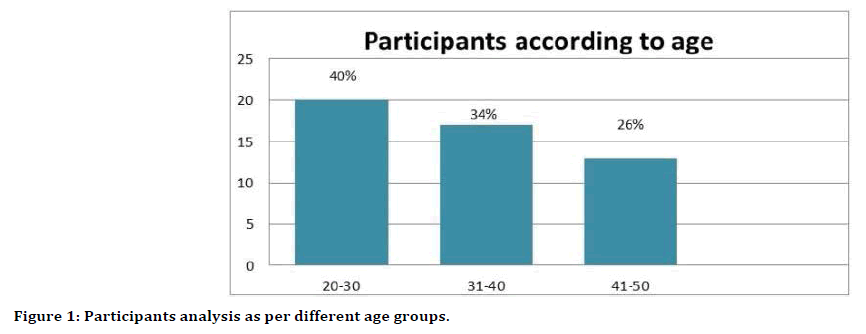
Figure 1: Participants analysis as per different age groups.
| Age | Number | Percentage |
|---|---|---|
| 20-30 | 20 | 40 |
| 31-40 | 17 | 34 |
| 41-50 | 13 | 26 |
| Total | 50 | 100 |
Table 1: Distribution of participants according to age.
Participant’s observation according to religion
Religion wise distribution of the subjects as; A total 37 (74%) subjects were Muslim, 7 cases were (14%) Hindu, 4 cases (8 %) were Sikhs and 2 cases (4%) were others (Figure 2 and Table 2).
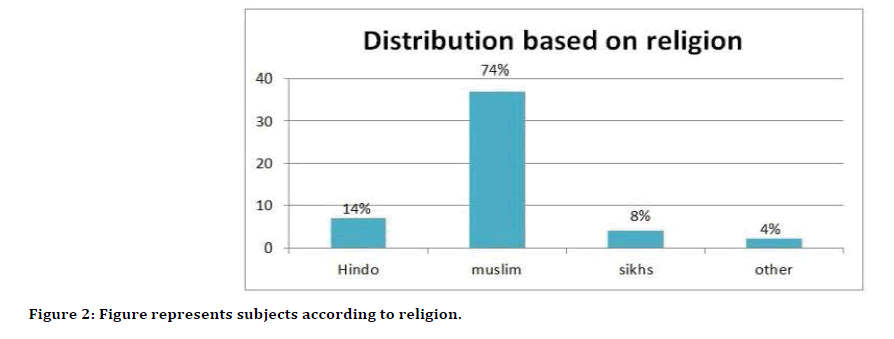
Figure 2: Figure represents subjects according to religion.
| Religion | Number | Percentage |
|---|---|---|
| Hindu | 7 | 14 |
| Muslim | 37 | 74 |
| Sikh | 4 | 8 |
| Others | 2 | 4 |
| Total | 50 | 100 |
Table 2: Distribution of participants according to religion.
Participant’s observation as per addiction habits such as cigarette smoking and chewing tobacco
Addictions habits were analyzed in all cement workers and it was found that 23 (46%) were smoker, 3 cases (6%) were chewing and 2 (4%) cases were both smoking and chewing habits (Figure 3 and Table 3).

Figure 3: Distribution of smoking and chewing habits among the participants.
| Addiction | Number | Percentage |
|---|---|---|
| Smoking | 23 | 82 |
| Chewing | 3 | 11 |
| Both | 2 | 7 |
| Total | 28 | 100 |
Table 3: Distribution of smoking and chewing habits among the participants.
Analysis of workers according to health related complications
Workers were divided according to health related complications as 5 (10%) participants showed productive cough, 7(14%) were having complication of asthma, 7(14%) were having lungs infection. Moreover, 1 (2%) subjects showed allergy and 11 (22%) were other complication including hypertension, diabetes and back pain (Figure 4 and Table 4).
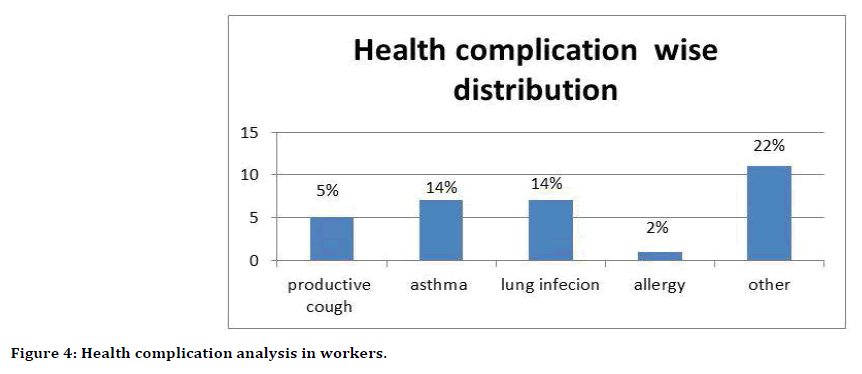
Figure 4: Health complication analysis in workers.
| Complications | Number | Percantage |
|---|---|---|
| Cough | 5 | 16 |
| Asthma | 7 | 23 |
| Lung infections | 7 | 23 |
| Allergy | 1 | 3 |
| Others | 11 | 35 |
| Total | 31 | 100 |
Table 4: Health complication among cement workers.
Hematoxylene and eosin staining on the sputum samples
All fifty sputum samples were collected in plastic jar with detailed history of the participants to evaluate the alterations in cells. All samples were performed for H and E staining. We observed 35 (70%) participants showed severe inflammation and most of the inflammatory cases were also having long history of smoking and chewing. We did not notice other types of alterations like metaplasia and dysplasia. Whereas all control samples were also run for H and E staining to compare the results with workers and inflammation were not found in control groups (Figure 5 and Figure 6).
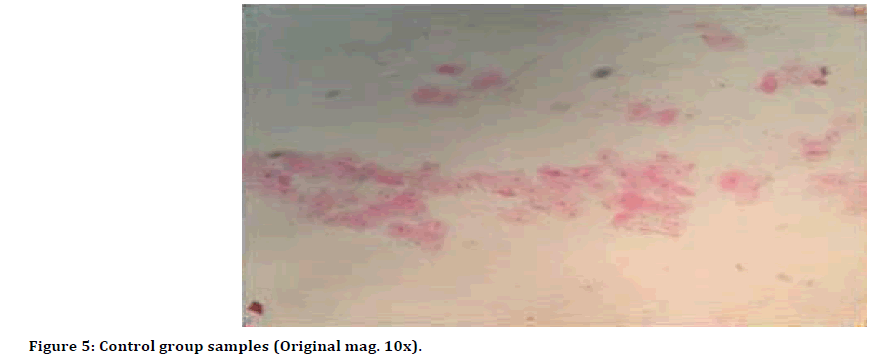
Figure 5: Control group samples (Original mag. 10x).
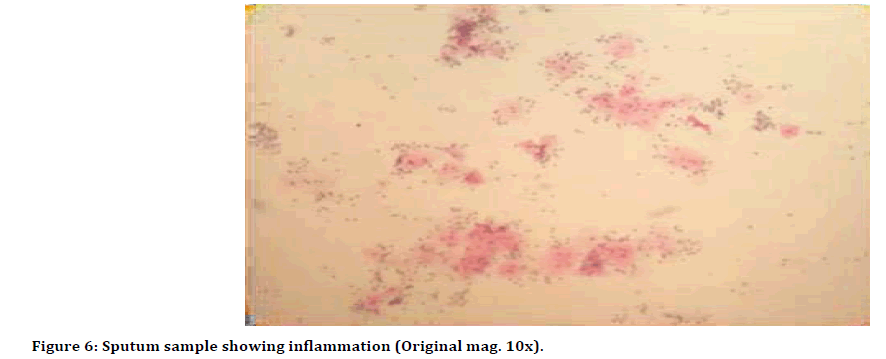
Figure 6: Sputum sample showing inflammation (Original mag. 10x).
Discussion
The cement particles make it a potential health hazard when they reach in internal organs particularly lungs leading to occupational lung complications [15]. The main route of entry of cement dust particles in the body is the respiratory tract and respiratory tract are exposed numerous to potentially harmful substances in the cement mill environment. Besides cement dust various gaseous pollutants are also contributed by cement factories, which cause pollution and ultimately affect human health. The various organ systems which get affected because of cement factories include: such as allergic reactions that interfere with breathing, Chronic bronchitis, Asthma, Lung cancer, Pneumonia, Tuberculosis, Cough, Chest pain, Irregular heart beat and Chest pain[16]. In this current study we also noticed that various types of other health complication as productive cough, 14% having complication of asthma, (14%) were having lungs infection. Moreover, 1 (2%) subjects showed allergy and 11 (22%) was other complication including hypertension, diabetes and back pain. Other finding also showed health related complication in cement workers and they reported that dust exposed workers in cement factory were significantly associated with high prevalence of cough, sputum, dyspnea and wheezing than the control group[17-19]. Numerous other studies also confirmed that chronic occupational exposure to dust in cement factories leads to a greater prevalence of respiratory symptoms such as Chest Tightness, Cough, Sputum, Wheezing and Dyspnea among exposed than unexposed [20,21].
Conclusion
We conducted this study to inquire about the prevalence of respiratory complications in cement factory workers we found very high rate of respiratory complications such as 5 (10%) participants showed productive cough, 7(14%) were having complication of asthma, 7(14%) were having lungs infection. Moreover, 1 (2%) participants showed allergy and 11 (22%) was other complication including hypertension, diabetes and back pain. Histopathology also showed severe inflammation and it was around 70% of the all subjects.
The results of this study are very important because although Qassim cement industry claim to be a living example where the dust emission is reduced to less than 30 mg/m3. There is a very high prevalence of respiratory morbidities. Exposure to cement dust can cause various acute and chronic respiratory diseases including respiratory function impairment. Our finding concluded that cement particle exposure or inhalation causes respiratory complications. We recommend a strict law to be enforced to control the respiratory morbidities among cement factory workers in this area.
References
- Meo SA, Azeem MA, Subhan MMF. Lung function in Pakistani welding workers. J Occup Environ Med 2003; 45:1068–1073.
- Meo SA. Lung function in Pakistani wood workers. Int J Environ Health Res 2006; 16:193–203.
- Meo SA. Dose responses of years of exposure on lung function in flour mill workers. J Occup Health 2004; 46:187–191.
- Abudhaise BA, Rabi AZ, Zwairy MAA, et al. Pulmonary manifestation in cement workers in Jordan. Int J Occup Med Environ Health 1997; 10:417–428.
- Oleru UG. Pulmonary function and symptoms of Nigerian workers exposed to cement dust. Environ Res 1984; 33:379–385.
- Yang CY, Huang CC, Chiu HF, et al. Effects of occupational dust exposure on the respiratory health of portland cement workers. J Taxicol Environ Health 1996; 49:581–588.
- Fell AKM, Thomassen TR, Kristensen P, et al. Respiratory symptoms and ventilatory function in workers exposed to portland cement dust. J Occup Environ Med 2003; 45:1008–1014.
- Sheppard D, Hughson WG, Shellito J. Occupational lung diseases. Text Book of Occupational Medicine 1990; 221–236.
- Alakija W, Iyawe VI, Jarikre LN, et al. Ventilatory function of workers at okpella cement factory in Nigeria. West Afr J Med 1990; 9:187–192.
- Bazas T. Effects of occupational exposure to dust on the respiratory system of cement workers. J SocOccup Med 1980; 30:31–36.
- Fell AK, Sikkeland LI, Svendsen MV, et al. Airway inflammation in cement production workers. Occup Environ Med 2010; 67:395–400.
- Meo SA. Health hazards of cement dust. Saudi Med J 2004; 25:1153–1159.
- Mwaiselage J, Bratveit M, Moen B, et al. Cement dust exposure and ventilatory function impairment: an exposure-response study. J Occup Environ Med 2004; 46:658–667.
- Yang CY, Huang CC, Chiu HF, et al. Effects of occupational dust exposure on the respiratory health of Portland cement workers. J Toxicol Environ Health 1996; 49:581–588.
- Green GM. The J burns amberson lecture. In defense of lung. Am Rev Rep Dis 1970; 102:691-703.
- Sana S, Henah MB. Health risks associated with workers in cement factories. Int J Sci Res Pub 2013; 3:1-5.
- Mwaiselage J, Bråtveit M, Moen BE, et al. Respiratory symptoms and chronic obstructive pulmonary disease among cement factory workers. Scand J Work Environ Health 2005; 31:316-323.
- Plog BA, Quinlan P. Fundamental of industrials hygiene. 5th Edn. Itasca, Ill, National Safety Council Press. 2002
- Ahmed HO, Abdullah AA. Dust exposure and respiratory symptoms among cement factory workers in the United Arab Emirates. Ind Health 2012; 50:214-222.
- https://www.ilo.org/safework/info/publications/WCMS_113329/lang--en/index.htm
- Mirzaee R, Hashemi R, Sadeghi M, et al. Effects of exposure to portland cement dust on lung function in portland cement factory workers in khash. Iran J Environ Health Sci Eng 2008; 5:201-206.
Author Info
Mohammad Shakil Ahmad1, Waqas Sami1* and Motaib Eid Alharbi2
1Department of Community Medicine & Public Health College of Medicine, Saudi Arabia2Medical Laboratory, Rokn Alsaraya medical complex, Buraydah, KSA
Citation: Mohammad Shakil Ahmad, Waqas Sami, Motaib Eid Alharbi, Work Related Respiratory Complications among the Worker of Qassim Cement Industry of Qassim Region, Saudi Arabia, J Res Med Dent Sci, 2019, 7(6):01-06.
Received: 21-Sep-2019 Accepted: 25-Oct-2019
